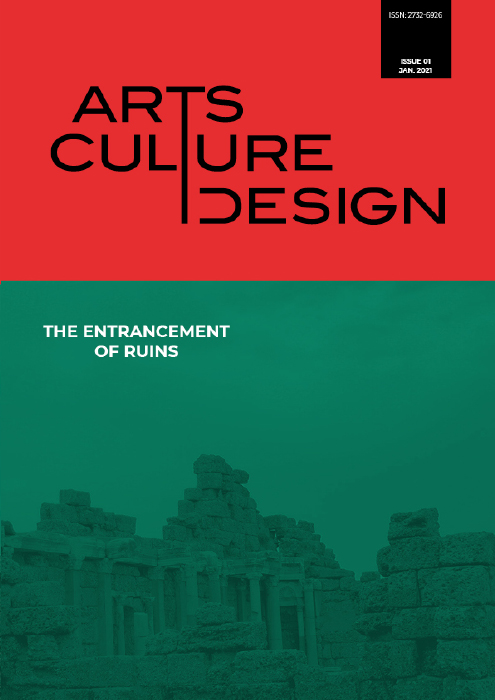Vol. 1 (2021): The Entrancement of Ruins

Published: 11.06.2020
Time, one of the dynamic aspects of existence and human creation, embodies duration and entails change. The decay that it imposes on matter reveals [the entities of] time and space as entangled, distinct and indivisible forms of being. Whether the ruin represents a trauma or a sign of the imposition of nature on human traces, constitutes a bridge of visual mediation and in many cases a carrier of “hidden pleasure”.
George Simmel (1958: 380-381)[1] in his essay “The Ruin” describes this facination towards decay as a dominating feeling that attracts us to a ruined building. The spectator, be it a (flâneur), a pilgrim, an observer of historical evidence, a researcher of the act of ruining, an artist, experiences nostalgia, memory, continuity, anamnesis, artistic inspiration, attraction, awe, or the distancing from the uncanny.[2]
The first issue of Arts | Design | Culture focuses on the topic of ‘The Entrancement of Ruins’, inviting academic teachers, researchers, designers and artists to contribute in the wake of this [a] discussion.
- Simmel, George, 1958. “Two Essays: The Ruin.” The Hudson Review, 11(3), 371-385. doi:10.2307/3848614.
- Freud, Sigmund, 2003 |1919. The Uncanny (Das Unheimliche). MClintock, David, (transl.) London: Penguin books.
Total pages: 170 pages
Full Issue
Articles
VIDEO GAMES AS TECHNOLOGICAL RUINS OF A RECENT PAST
Rossetos Metzitakos, Dimitrios Panagiotakopoulos, Marina Christodoulou
DAMNATIO MEMORIAE: CONTEMPORARY CONDEMNATION OF MEMORY
Zoe Georgiadou, Vaso FLorou, Ifigeneia Ilia - Georgiadou
GRAPHIC DESIGN IN FILM: BUILDING CHARACTER IDENTITY AND VISUAL STYLE IN THE GREAT GATSBY (2013)
Helena Tude, Marta Varzim


